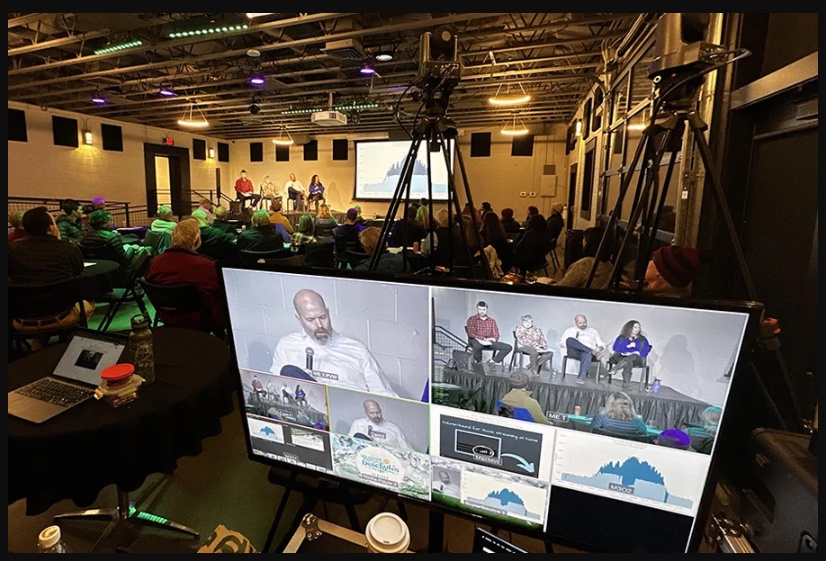As the landscape of events continues to evolve, a new paradigm has emerged—hybrid events. Blending the best of both physical and virtual experiences, hybrid event production has become a transformative force, offering unparalleled flexibility and engagement. In this exploration, we delve into the world of hybrid event production, unraveling the key elements that make these events a dynamic bridge between the physical and digital realms.
1. Definition: The Fusion of Physical and Virtual Realities
Hybrid event production represents the seamless integration of in-person and virtual components. It allows attendees to participate both physically and remotely, breaking down geographical barriers and expanding the reach of events. This dynamic approach offers a myriad of opportunities for enhanced engagement and inclusivity.
2. Strategic Planning: Crafting a Hybrid Experience
The success of a hybrid event begins with strategic planning. Event producers meticulously design experiences that cater to both on-site and online audiences. From choosing the right technology platforms to orchestrating interactive sessions, strategic planning is the compass that guides the creation of a cohesive and immersive hybrid event.
3. Technological Integration: Enabling Seamless Connectivity
Technology lies at the heart of hybrid events. Event producers leverage advanced platforms for live streaming, virtual networking, and interactive features that seamlessly connect remote participants with those attending in person. The careful integration of technology ensures a smooth and cohesive experience for all attendees, regardless of their physical location.
4. In-Person Experience: Elevating the Physical Dimension
While virtual elements are a key component, the in-person experience remains integral to hybrid events. Event producers focus on creating engaging physical environments, considering aspects such as venue design, safety protocols, and on-site activities. The goal is to provide an immersive experience that captivates on-site attendees and enhances their overall event journey.
5. Audience Engagement: Bridging the Gap
Hybrid event production places a strong emphasis on audience engagement. Event producers employ interactive tools, Q&A sessions, and virtual networking opportunities to bridge the gap between physical and virtual participants. Creating a sense of community and connection is paramount to the success of hybrid events.
6. Content Curation: Tailoring for Diverse Audiences
The curation of content is a delicate balance in hybrid events. Event producers tailor presentations, workshops, and entertainment to resonate with both on-site and online audiences. This thoughtful approach ensures that the content is accessible, engaging, and relevant to the diverse preferences of participants in different settings.
7. Logistics Mastery: Orchestrating Complexity
Hybrid event logistics require a mastery of complexity. Event producers navigate the challenges of coordinating both physical and virtual elements, from managing in-person registrations to troubleshooting technical issues for remote attendees. The seamless orchestration of logistics is essential for creating a cohesive and stress-free experience for all participants.
8. Post-Event Interaction: Extending the Experience
The conclusion of a hybrid event does not mark the end of the experience. Event producers strategize post-event interactions, providing opportunities for continued engagement and feedback. Virtual content archives, discussion forums, and follow-up sessions contribute to a sustained sense of community long after the event has concluded.
9. Measurement and Analytics: Quantifying Success
Quantifying the success of a hybrid event requires robust measurement and analytics. Event producers analyze data on attendance, engagement levels, and participant feedback to gain insights into the effectiveness of different components. This analytical approach informs future hybrid events, allowing for continuous improvement.
10. Flexibility and Adaptability: Pivoting in Real Time
Flexibility is a hallmark of successful hybrid event production. Event producers must be adept at pivoting in real time, addressing unforeseen challenges and adapting to the dynamic nature of hybrid experiences. The ability to navigate uncertainties with agility ensures that the event remains a positive and memorable experience for all participants.
Conclusion: Shaping the Future of Events
Hybrid event production is not just a response to the current global landscape—it is a glimpse into the future of events. The fusion of physical and virtual elements opens doors to unprecedented possibilities for engagement, inclusivity, and reach. In the hands of skilled event producers, hybrid events become a dynamic bridge that connects audiences across distances, shaping the future of how we convene, connect, and experience events.


No comments yet